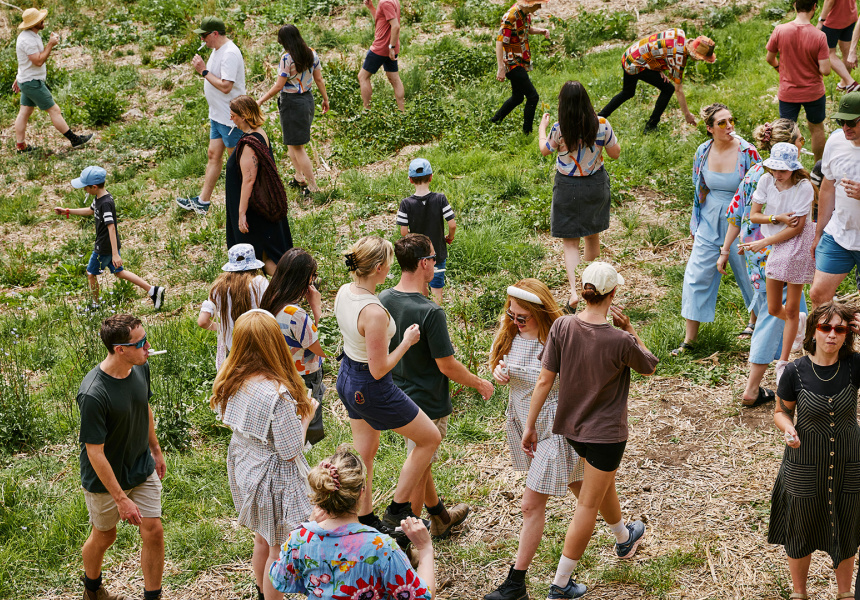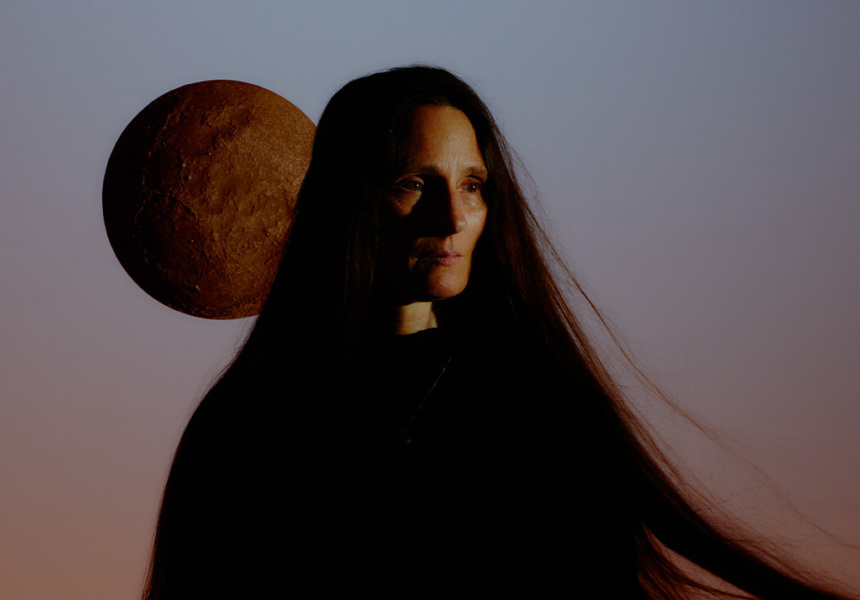“Look, in the right hands it could be very irritating, but hopefully not here,” says Melbourne-based composer Ciaran Frame. ‘I think in this case it’ll be more than that. It’ll be beautiful and ridiculous.”
Frame is heading up 10,000 Kazoos, a mass participation musical event that will do exactly what it says on the tin. Thousands of biodegradable kazoos will be handed out to willing participants at a packed Federation Square, and Frame will lead the crowd through a musical performance.
“It amplifies your singing voice and gives it a different texture,” says Frame. “But you don’t feel like you’re singing. You feel like you’re playing an instrument.”
We think you might like Access. For $12 a month, join our membership program to stay in the know.
SIGN UPFrame has a background in what he calls “serious” composition, scoring music for string quartets and chamber groups, but it was his other job in childcare that gave him this idea. After introducing the kazoo to a classroom of three-year-olds, he was struck that these children were turned into virtuosic musicians within seconds.
“Singing is hard to do in front of ten people, let alone 10,000,” he says. “But this provides the excuse to feel confident enough to not worry about feeling silly. And let’s be honest, it’s 10,000 people playing kazoos. it is silly. There’s no expectation for a beautiful note, or an in-tune pitch. It’s just a kazoo. What it leaves you with is an outlet for expression. An outlet for your own voice.”
“You basically hum into it, and the sound that comes out is actually just your voice,” says composer Ciaran Frame. “You can play many, many notes. People will mostly just give it a little honk, but it’s actually quite versatile.”
This versatile instrument has no barriers to entry and that’s Frame’s modus operandi. “Anyone, regardless of background, language, ability, can create,” he says. So does this mean it’s perfect for non-musicians?
“I kind of have a problem with that word,” he says. “The way I prefer to see it is that everyone is a musician.”
Is it true that everyone is a musician? Or does it depend on the instrument? And when does free expression become something more than just random noise and enter the realm of experimental music? Composer and performer Genevieve Lacey says spontaneity and unpredictability are vital components. Music is about connection and ritual. Skill has little to do with it.
“It feels like you’re inside a bell,” says Lacey. “Inside something shifting and moving and coming to life—by, with, and for us.”
Lacey is talking about an immersive, experimental performance involving the oldest known notated piece of music in the world. In partnership with Erkki Veltheim, she is bringing the Hurrian Hymn to life for their performance Consort of the Moon in Fitzroy Gardens. Around 250 participants will be enclosed in a circle of speakers playing a multi-channel backing part, and will lend their own voices to the performance, led by singers Deborah Kayser and Austin Haynes.
“Notation is always imperfect and inadequate,” says Lacey. The clay tablets which contain the notation for Hurrian Hymn no. 6 were discovered in the ruins of the Royal Palace at Ugarit, (modern-day Northern Syria), and date to around the 14th century BC. Intended for a nine-stringed lyre, the notation is incomplete, and is transcribed in cuneiform writing, a script which has been long since forgotten. There’s no way to know for sure what it was supposed to sound like. It’s said to be an an ode to Nikkal, a goddess of harvest and fertility. Contemporary interpretations are haunting and hypnotic.
Music is a ritual, says Veltheim, one that doesn’t come alive until it’s performed. “You can record something in writing or notation, but unless that part is kept alive, it’s just a piece of stone,” he says. To this end, the Hurrian Hymn is merely a starting point to create this ritual, a fresh casting of a millennia-old spell.
Lacey says imperfection and spontaneity are a core part of music. “Even when you’re working with musical notation, it will never tell you about the entirety of the experience of sharing the sound together,” she says. Consort of the Moon is all about the performance, which is intended to be shifting and evolving. Participants will take cues from the lead vocalists, from each other, and from the backing tape in a flowing, unpredictable way, creating, as Lacey puts it, “a hazy, smudging sound world.”
The event will happen at dusk, when the animals come out—the voices of bats, cicadas, and owls will be part of the mix. It can never be performed in the same way twice.
“Our hope is people will get a heightened sense of sensitivity to these sounds,” says Veltheim.
“[Experimental composer] John Cage says that if you open musical composition to any kind of sound, the listener carries something of that sensation into the world,” says Veltheim. “Then you can imagine our entire world as a composition, as an aesthetic sonic environment.”
There’s no expectation of technical proficiency in their performance either. Much like Frame’s opinion about the nature of kazoos, Lacey and Veltheim embrace chaos and unpredictability. “It’s important to create an environment where if people prefer to just sit and listen, that’s welcome too,” says Lacey. “You can make sound, or just absorb it.”
10,000 Kazoos takes place at 4pm on Saturday June 10 at Federation Square. Consort of the Moon is at 5.30pm from Saturday June 10 to June 14 (excluding Sunday) at Fitzroy Gardens.
Tickets to these performances and other events at Rising are available here.
This article is produced by Broadsheet in partnership with Rising.




